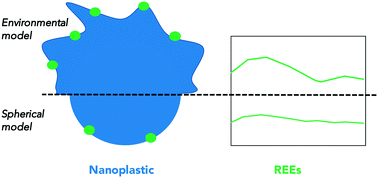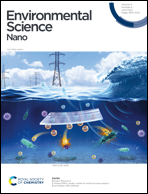Metal-binding processes on nanoplastics: rare earth elements as probes†
Abstract
The presence of nanoplastics in the ocean and soil demonstrates their global distribution in the environment. Due to their colloidal properties, nanoplastics can influence trace metal speciation in natural matrices, which has been poorly addressed due to the lack of methodology to assess the nanoplastic–metal association in the natural environment. To obtain a global picture of this property for nanoplastics, this work is aimed s at using rare earth elements (REEs) as chemical probes to understand the metal-adsorption mechanisms that could occur onto the surfaces of nanoplastics, which would be expected to be highly oxidized in the environment. Comparison between environmentally relevant nanoplastic models and REE–COOH complex patterns demonstrated that REEs are adsorbed through the COOH sites onto the nanoplastics. These adsorptions pathways follow a mono-ligand process for light REEs and a bi-ligand for heavy REE complexes, chelation being excluded. We demonstrated that the denticity of the complexes was influenced by the pH, REE loading, and competitive ions. Bi-ligand complexes with heavy REEs dominated at pH > 4.5 and low REE loading. This study presents a novel approach for understanding NP–metal interactions and highlights REEs as powerful tracers of sorption mechanisms.

- This article is part of the themed collection: Environmental fate of nanomaterials


 Please wait while we load your content...
Please wait while we load your content...